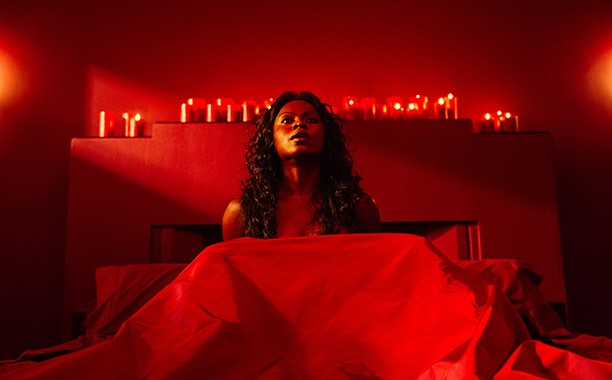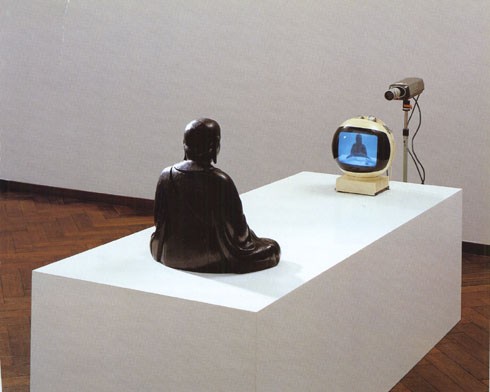Last Sunday night may have been the weirdest night in the history of American television.

Kyle MacLachlan as Agent Dale Cooper lost in the Black Lodge in the revival of Twin Peaks.
Surrealism and Dada emerged as art movements in the wake of the horrors of World War I. Two centuries after the Enlightenment promised to solve the world’s problems with science and reason, Dada artists took a look at a world tearing itself apart with industrialized slaughter, threw up their hands, and said “screw it.” Their abandonment of rational thought for carefully considered nonsense was an act of nihilism: “The world is ending. Let’s party!” Surrealism, which was initially elucidated by critic Andre Breton in 1924’s Surrealist Manifesto, shared Dada’s skepticism of skepticism itself, but put a more hopeful spin on it. Maybe the problems with human consciousness that led to World War I was because we had divorced our subconscious. Images and ideas that reached beyond the conscious mind could reunite the warring halves of ourselves and lead to a more enlightened and psychologically healthy future.
Since the beginning of film and television, artists have sought to use the medium of moving pictures to explore the fantastical edges of the human mind. At the turn of the last century, filmmaker Georges Meliés made major breakthroughs in special effects while bringing to life fantasies like “A Trip To The Moon” One of television’s first big hits was The Twilight Zone, Rod Serling’s anthology series which brought strange morality tales to American audiences weekly for five years in the early 1960s. A true surrealist would claim Meliés as one of their own before The Twilight Zone. Serling dabbled in all aspects of the fantastic, but at his heart he was a science fiction writer. His abiding point of view was that reason cut with compassion can save us. In scripts like the classic “The Monsters Are Due On Maple Street”, the real threat the community is not the titular monsters, but ignorance, bigotry, and fear—all of which can be cured by rationalism. Meliés, on the other hand, was concerned only with the creation of incredible images far outside what he or any other viewer had ever experienced in real life. Even when he was adapting Jules Verne, the dean of modern science fiction writers, Meliés didn’t care about science.
Twin Peaks and American Gods Bring Surrealism To TV (3)
Perhaps ironically, our current age of big-budget, prestige television has opened opportunities for Surrealists to spread their wings. There’s plenty of magic in Game Of Thrones, but that’s full-on high fantasy. Magical realism, the South American literary movement that combines social realism with fantastic visions from the subconscious, has had a big influence on shows as diverse as Deadwood, Six Feet Under and even Breaking Bad, and the supernatural elements of horror have brought us visually stunning moments on shows like American Horror Story. But the Starz adaptation of Neil Gaimen’s novel American Gods is twenty first century TV’s first dive into full bore, capital-S Surrealism.
Twin Peaks and American Gods Bring Surrealism To TV (2)
Gaiman’s story of Shadow Moon, a psychologically dislocated ex-con who finds himself caught up in a war between old gods like Odin and Anubis and new gods like Media and Technology, has been challenging literary taxonomy since its 2001 release. (It was, for a time, held up as an example of a subgenre dubbed “mundane fantasy”, until people realized no one wanted to read mundane fantasies.) In the hands of director and showrunner Brian Fuller, it has blossomed into the weirdest trip on the flat screen. Surrealism tries to tap into dream logic. The characters may not follow real world rules, but there’s a sense they are doing things that make sense to them, because they’re motivated by forces you can’t see. When Bilquis, the African fertility goddess stranded in America, ends her sexual encounters by absorbing men and women into her vagina, you have trouble believing what you’re seeing, but there’s no question she has a damn good reason for doing it. There is an underlying order to this seeming chaos, you just don’t know what it is yet.

Yetide Badaki as the fertility goddess Bilquis in American Gods.
Fuller and Gaimen’s search for images and ideas to illustrate the psychic undertow of everyday life, they are practicing pure surrealism. The show has found an unexpectedly large audience during the Sunday evening prestige TV time. Starz has announced a second season for the expensive show after only four episodes. But last Sunday night, they were upstaged by America’s greatest living surrealist. 25 years after it was ignominiously canceled, Twin Peaks returned to Showtime with David Lynch at the helm.
Twin Peaks originated as a half-parody, half homage to the excesses of American soap operas. But Lynch, who is an avid practitioner of Transcendental Meditation, is much more in touch with his subconscious than most directors. The strange images and ideas that seeped into the seemingly mundane murder mystery that was the original Twin Peaks were interpreted as mysteries that needed to be solved by the minds of American audiences raised on police procedurals. When they figured out the mysteries weren’t meant to be solved by their conscious minds, audiences drifted away in 1991. The final episode of the original series, one of the greatest and most surreal hours of television ever produced, was originally viewed only by the Lynchian cultists who had held on once Laura Palmer’s murderer was prematurely revealed.
Twin Peaks and American Gods Bring Surrealism To TV
The two hours of the third season of Twin Peaks that premiered last Sunday gave the audience a taste of what they had been missing. This is not the story of a sleepy Northwestern town full of quirky characters. This is the unfiltered product of Lynch’s TM practice, a direct line into the subconscious mind of one of America’s great film directors. Of the multiple storylines that emerged out of the incredibly dense episode called “Return”, the strangest and most compelling is the glass box. Located somewhere in New York, the nondescript building hides a secret room with a glass box inside. A dopy young man is hired to watch the box, in which nothing special is happening, and record every second of that nothing with high speed cameras. It’s a little like video artist Nam Jun Paik’s sculpture Buddha Watching TV, only much more sinister.

Nam Jun Paik’s 1974 sculpture TV Buddha.
When our young man is distracted from his normally fruitless observations, something horrible manifests in the box, and then breaks free to kill him. Later, the appearance of Dale Cooper in the box suggests it is a portal into the spirit world, or the subconscious, that Twin Peaks calls The Black Lodge.

The mysterious glass box in New York from Twin Peaks ‘Return’.
Dada and Surrealism grew out of a time of uncertainty and discontent with the status quo. In the wake of World War I, it felt like the world had stopped making sense, and the art movement reflected that. That a new American surrealism would find traction in the mass media of 2017 suggests a similar mood has gripped us, and Americans are staring into the glass box, seeking answers where none are forthcoming.